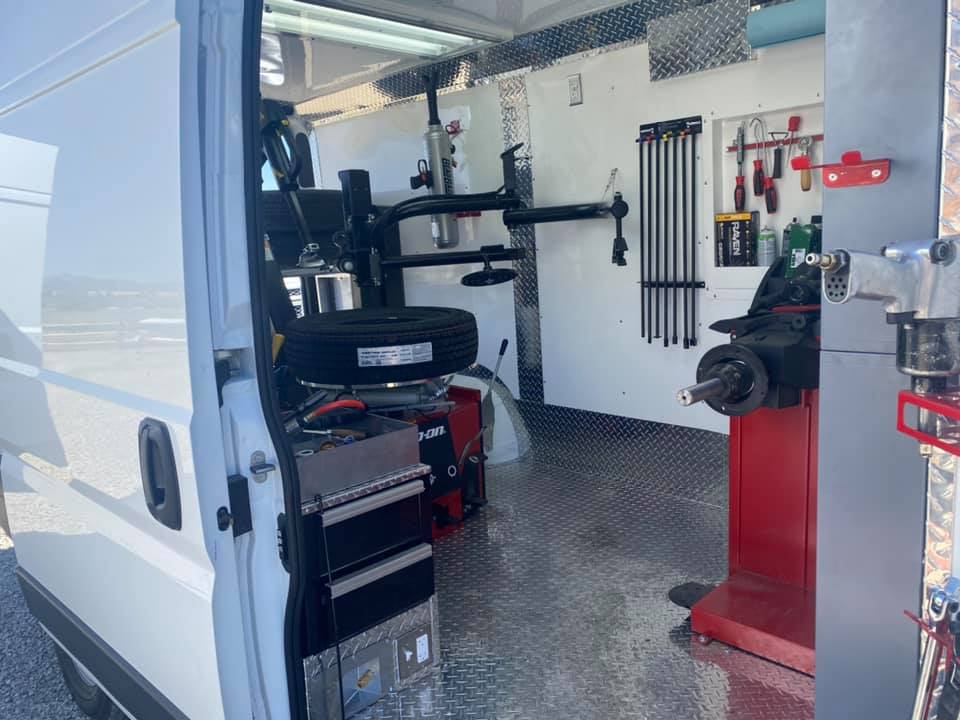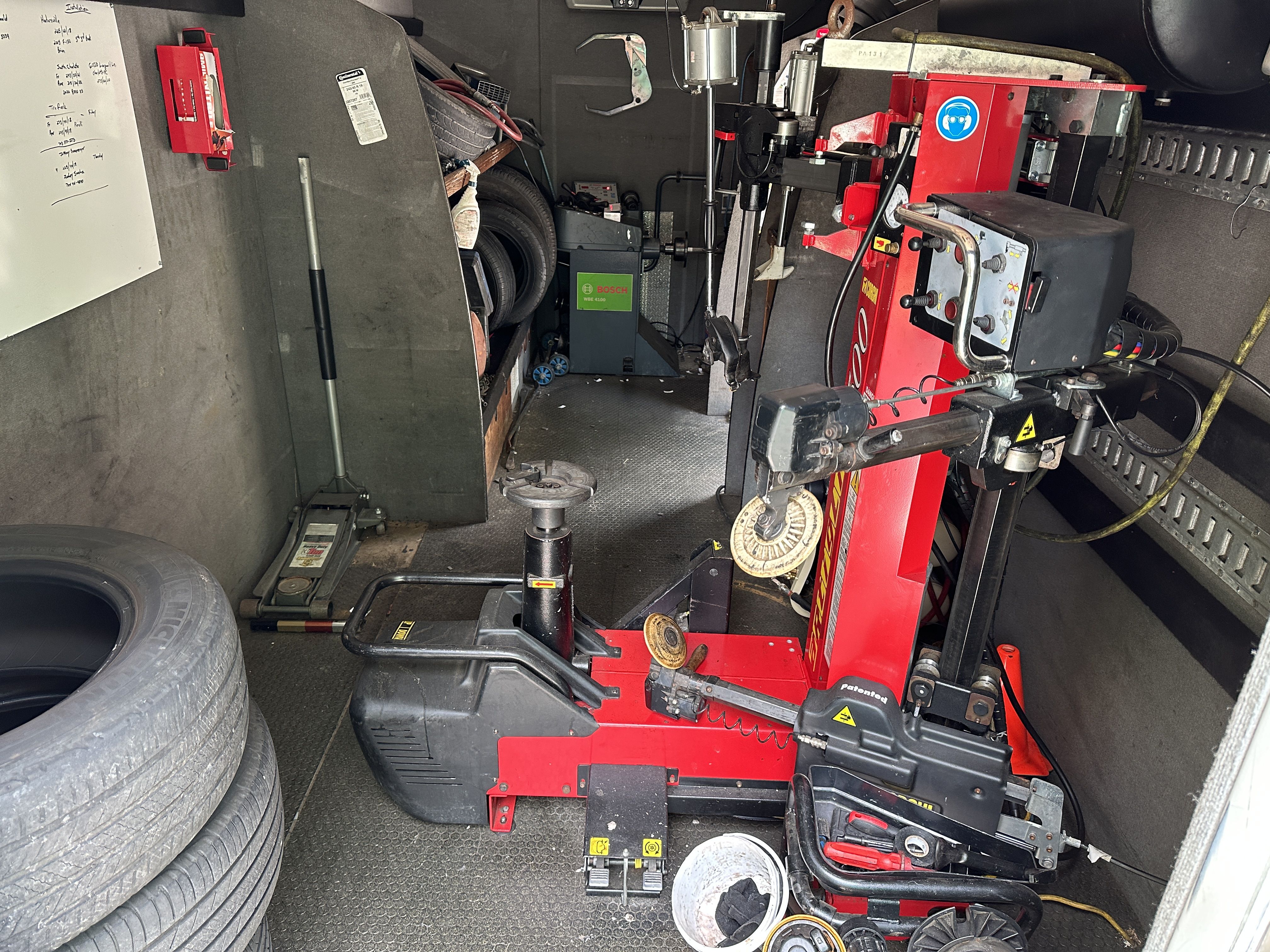Tire Service: Proven Methods for Ideal Tire Maintenance and Treatment
Keeping ideal tire condition is vital for both safety and performance of any kind of lorry. From making certain correct tire pressure to regular rotation and placement, there are tested methods that can considerably expand the lifespan of your tires and enhance total driving experience. As we explore the details of tire care and upkeep, we will uncover vital standards that every automobile proprietor ought to stick to for the very best possible results. Let's explore the globe of tire solution and uncover the secrets to keeping your tires in top-notch form for the long haul.
Significance of Tire Stress
Ample tire pressure promotes much better fuel efficiency, as under-inflated tires can lead to increased rolling resistance, creating the engine to function more difficult and consume even more gas. Appropriate tire pressure makes sure also tread wear, enhancing tire durability and saving money in the long run by delaying the need for early substitutes. Consistently inspecting and changing tire stress, particularly before long journeys, is an easy yet effective means to improve vehicle performance, prolong tire life-span, and prioritize safety on the road.
Tire Rotation Standards
When considering tire turning standards, it is vital to understand the relevance of this maintenance task in optimizing tire life expectancy and preserving optimal automobile efficiency. Tire turning includes altering the placement of each tire on an automobile to ensure even walk wear. Front tires have a tendency to put on faster than rear tires because of guiding forces, making regular rotation important for balanced wear patterns. The recommended rotation pattern differs depending upon whether a car is front-wheel, rear-wheel, all-wheel, or four-wheel drive. Normally, tires should be revolved every 5,000 to 7,500 miles, or as encouraged in the car manual. Neglecting tire rotation can lead to uneven wear, affecting handling, traction, and possibly compromising car safety and security. By sticking to correct rotation standards, vehicle drivers can expand the life of their tires, improve gas effectiveness, and boost general driving experience. Routine turning is an easy yet efficient maintenance practice that adds considerably to tire longevity and lorry efficiency.

Benefits of Wheel Placement
Making certain appropriate wheel positioning after tire turning is important for maintaining balanced wear patterns and maximizing car efficiency. Wheel placement describes the adjustment of the angles of the wheels to the producer's specs. Among the vital benefits of wheel positioning is boosted handling and steering action. When the wheels are effectively straightened, it reduces steering effort, guaranteeing a smoother and a lot more regulated driving experience. Furthermore, proper wheel placement aids to expand the lifespan of your tires. Misaligned wheels can create irregular tire wear, leading to premature tire substitute and increased upkeep prices.

Tire Footstep Depth Inspect
Executing a regular evaluation of tire walk deepness is vital for preserving secure driving problems and prolonging the life expectancy of your tires. The walk on your tires plays a crucial role in supplying grip, specifically in slippery or wet conditions. To examine your tire tread depth, you can utilize a tread depth scale or the cent examination. The recommended step depth goes to the very least 2/32 of an inch. It is time to replace your tires to make sure optimum efficiency and safety and security on the roadway if the step deepness is listed below this limit. Unequal walk wear can suggest problems with tire placement, suspension, or stress, highlighting the value of routine walk deepness checks. Overlooking to monitor and maintain correct step deepness can result in decreased grip, longer stopping ranges, and an enhanced risk of hydroplaning. By incorporating tire step depth look into your regular upkeep routine, you can drive with confidence recognizing that your tires remain in top problem.
Seasonal Tire Evaluation
Seasonal tire assessment is an essential element of tire maintenance that guarantees tires are ready to face the obstacles postured by various weather condition conditions. In prep work for winter months, it is crucial to inspect the tire pressure frequently as chilly official site temperatures can create tire stress to drop. By conducting routine seasonal tire evaluations, drivers can lengthen tire life expectancy, improve fuel performance, and most significantly, make certain a safe driving experience in varying weather problems.
Final Thought
To conclude, preserving proper tire stress, turning tires frequently, aligning wheels appropriately, keeping an eye on tread deepness, and carrying out seasonal inspections are crucial methods for optimum tire care. By adhering to these verified methods, vehicle drivers can ensure their tires last much longer, perform far better, and view publisher site contribute to total vehicle safety and security. It is necessary to focus on tire maintenance to stop accidents, boost fuel performance, and prolong the life expectancy of tires.
Adequate tire pressure advertises better fuel effectiveness, as under-inflated tires can lead to increased rolling resistance, triggering the engine to function harder and take in even more fuel.When taking into consideration tire turning guidelines, it is necessary to recognize the significance of this maintenance job in taking full advantage of tire life-span and maintaining ideal automobile efficiency. Seasonal tire inspection is a fundamental facet of tire maintenance that guarantees tires are prepared to deal with the obstacles postured by different weather conditions. By conducting routine seasonal tire assessments, motorists can lengthen tire life-span, enhance fuel effectiveness, and most notably, ensure a safe and secure driving experience in varying weather condition problems.
In final thought, keeping proper tire stress, rotating tires on a regular basis, aligning wheels correctly, keeping track of tread depth, and conducting seasonal inspections are important practices for optimal tire treatment.